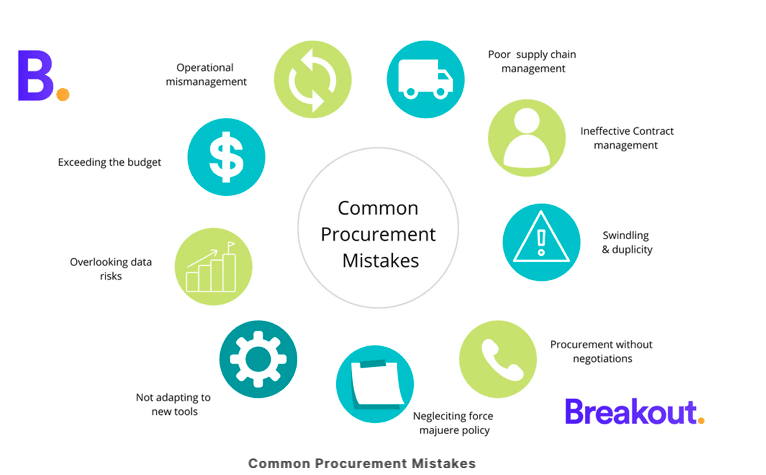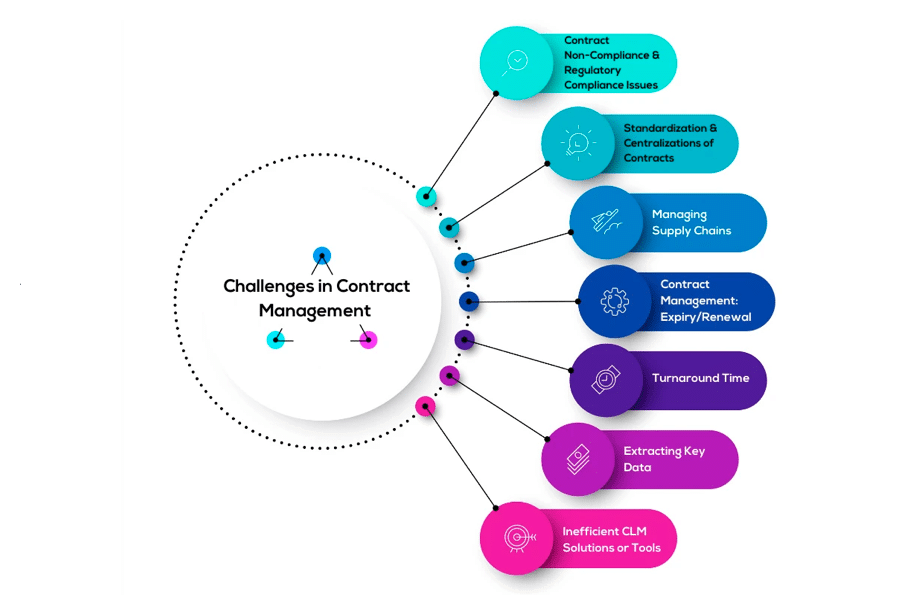Contracts can be both a valuable asset and catastrophic liability for companies depending on who you ask. A big part of that conversation involves how a legal department stewards those deals and avoids mistakes in contract management. In many cases, effective contract management is as much an exercise in organizational skills as it is in legal acumen. Here, we discuss some of the most common mistakes we see and explore ideas and technological solutions for your legal department to incorporate into practice.
Key Takeaways
- Contract management requires attention to all three parts of a contract’s lifecycle.
- Effective contract management requires a collaborative approach across legal teams and key stakeholders within a company.
- Working with checklists, centralized software solutions, and contract form banks can reduce the risk of mistakes and exposure from turnover in your legal department.
Mistakes in Contract Management Happen in All Phases of Dealmaking
Our list of mistakes can happen in all parts of the contract management process, so it’s important to quickly explain each of these phases.
You can best describe contract management in three parts. Your legal department starts with a notice of proposed terms stated in a letter of intent, the first draft of an agreement, or other less formal channels (e.g., email or through conversation). The second part is everything up through closing the deal, which includes managing redlines, negotiations, due diligence, and other logistics. The third and final part covers everything from post-closing up to the termination of the contract. Our list of mistakes can happen in all parts of the contract management process.
Our 5 Contract Management Mistakes Your Legal Department Should Avoid
1. You Don’t Use a Closing Checklist
A checklist is often the greatest tool for attorneys and legal operation specialists as they manage the execution of an agreement. Using one keeps you and your team organized throughout the closing process and avoids overlooking key documents.
While each contract closing checklist will have elements of uniqueness depending on the subject, they should cover the following information:
- The title of all relevant documents (e.g., contracts, related agreements, exhibits, schedules, etc.).
- The names of parties that need to review or sign the document.
- The projected and actual execution dates.
- The current status of each document (i.e., undrafted, V1, V2, executed, etc.).
2. Lack of Collaboration and Involvement from Key Stakeholders
While legal teams usually steer a company’s contract management operations, the job requires a collaborative approach from all the stakeholders. The easy method for identifying your stakeholders is to review your checklist and consider the people you need to review or sign off on items. Most GCs won’t disagree with the need to involve key personnel early, but common deal practices can create the risk of mistakes.

In today’s business world, most communication mistakes in contract management result from either a lack of technology or misuse. For example, not copying stakeholders on important emails. Another risk for legal departments is not having a centralized, well-organized contract management system for storing and sharing all documents related to an agreement. Without a proper tech solution, you risk creating a silo of key contract items and not receiving valuable input from the people responsible for fulfilling the terms.

3. Poor Controls for Managing Contract Obligations and Deadlines
Working with a modern contract management solution raises another common mistake in contract management – poor controls for monitoring obligations and deadlines. Your legal team fights hard during the negotiation process to secure favorable terms, but archaic methods of tracking those terms (including applicable deadlines) can lead to unnecessary expenses.
Some legal departments rely on calendar applications, spreadsheets, and other tools. However, they lack the simplicity and comprehensiveness of a single contract management solution software. Additionally, hosting your contract controls within personal frameworks poses a knowledge management risk if the people monitoring those tools were to leave your legal department. Having a central management system is preferable in this way.
4. Your Legal Department Does Not Maintain a Clause Bank
Your legal department likely relies on contract precedents and templates as a starting place for future deals. While this is a good practice, most GCs don’t go far enough in how they maintain their templates. Instead, they work off memory to find an adequate model for their contract. The problem with this approach is twofold. First, you are once again relying on the personal knowledge of senior lawyers and staff to find strong templates, which can be a problem once they are gone. Second, this framework creates exposure from a lack of standardization in your contract forms as you grab clauses from old contracts to fit your new needs. The consequence is inconsistency in your contract terms, which creates challenges in post-closing maintenance, especially when managing large contracts.
Ideally, your legal department should have a single bank of contract templates and clauses that serves as a resource for all attorneys and staff in your department. We know the process of building a contract form library is daunting. The reward lies in saving time during the initial stages of a contract and making your legal team more resilient to the effects of employee turnover.
5. No Post-Close Routine for Your Contracts
All attorneys know that getting a deal through the closing date is a huge hurdle, and it’s natural to experience a cooling-off period after signing. Yet, post-close is when legal departments might overlook loose ends and other details that can snowball into big mistakes weeks, months, or even years later.
Having a post-close routine can mitigate some of this risk. Your routine should include a review and report on the contract to identify deficiencies that need curing or additional steps you must prepare for. Taking this opportunity to pause and reflect on everything that happened also allows you to evaluate what went well and how your team could perform better in the future.
How Exigent Helps You Avoid Mistakes in Contract Management
No one is perfect, and mistakes will happen from time to time during the contract management process. The legal departments that are aware of the potential for mistakes and are proactive in their management solutions will find themselves with great loss prevention data and a happy c-suite. Exigent is ready to help legal departments needing big and small changes in their contract solutions. We add value to stretched-thin legal departments through our contract management solutions that give your greater access and control over how you interact with your documentation.
For an in-depth discussion, download our free whitepaper on contract management.
















